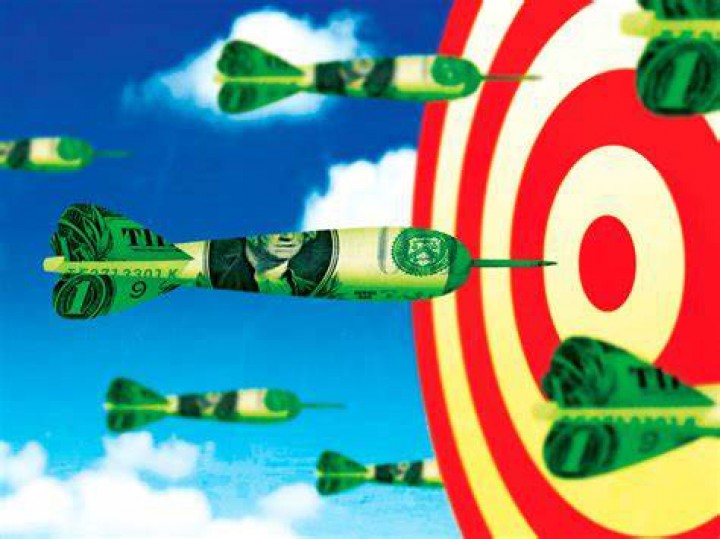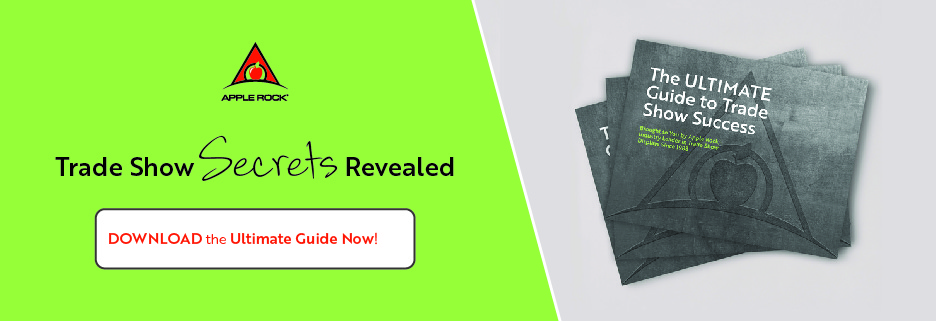Crafting an effective trade show budget lays the foundation for a successful marketing campaign. Aligning expenses with your objectives, whether spotlighting talent for lead generation or investing in brand-enhancing giveaways, is pivotal. Your budget steers your trade show strategy, and while initially daunting, the process becomes smoother as you progress. While trade shows are valuable, costs can escalate rapidly.
Establishing a solid financial base is key to optimizing your ROI.
An effective budget accounts for expected ROI and event objectives. ROI encapsulates trade show value, covering lead generation, brand visibility, sales, and partnerships. Aligned objectives, such as lead targets or product launches, guide fund allocation. The synergy between expenses and ROI-driven goals emphasizes the budget's key role in optimizing impact.
Understanding Average Trade Show Costs
The average cost of attending a trade show varies widely depending on factors such as industry, event size, location, and participation scope of events. The overall cost of attending a trade show can span from several thousand to tens of thousands of dollars, necessitating meticulous planning and budgeting to optimize return on investment and fulfill exhibition objectives effectively.
Trade Show Budget Components
1. Opting for Renting or Buying Your Trade Show Exhibit
When it comes to your exhibitor's booth, the choice between renting or buying can greatly impact your bottom line and overall strategy. For those new to the trade show scene or uncertain about the frequency of exhibit use, opting to rent can be a savvy move. Renting offers a flexible solution that aligns with your overall trade show budget and needs.
Advantage of Customization and Cost Efficiency with Rental Exhibits
Customization is a major advantage of renting a trade show exhibit. You have the freedom to tailor the exhibit design and appearance to match your branding and messaging, ensuring a seamless fit with your marketing goals. Once the show concludes, the rented exhibit is efficiently packed up and returned to the manufacturer. This eliminates the hassle of storage concerns, freeing up valuable space at your premises.
The decision to rent a trade show booth set up also minimizes your upfront investment, making it an attractive option for businesses aiming to manage costs while still delivering a compelling presence. By carefully evaluating your objectives and considering the versatility and convenience of renting, you can make an informed choice about booth design that optimally suits your unique needs and maximizes your success.
2. Calculating Expenses for Exhibit Materials
Exhibits use large-format graphics that can be quite pricey to produce and are thus a critical component of your overall trade show budget equation. There are wall graphics, lightboxes, walls, counters, and even hanging signs to consider. How many graphics will be enough to communicate your message, and which types? Will graphic design be completed in-house, or will you outsource a custom design? Who will print them?
3. Harnessing the Power of LED Panels
LED panels are more expensive than conventional graphics, but they can be a very effective way to capture people’s attention, enhance your booth space, and communicate your message. There are a variety of LED panels for different uses. They include flat, curved, and even transparent and are available in various pixel pitches. The pitch is the distance between pixels (center to center) on an LED panel. The closer the pixels are to each other, the crisper the image at closer distances.
4. Calculating Shipping Costs
Once the exhibit's weight and additional items are accounted for, getting a ballpark figure for shipping becomes the next step for exhibitors. Shop around for movers and get at least three quotes to make the most informed decision.
5. Navigating Show Services
Show services encompass a range of activities to ensure the seamless operation of your exhibit during the event. These activities include exhibit installation and dismantling in your booth space, project management of shipping logistics, on-site support and labor, as well as provisions for electricity, plumbing, rigging (such as hanging signs from the ceiling), internet connectivity, security, booth cleaning, drayage (the movement of goods within the exhibition venue), and extras such as furniture and carpet rental.
This budget allocation should be approximately 12% of your total budget towards show services. On average, show services typically constitute 40-60% of the overall booth fee.
6 - Embracing Onsite Advertising
Embracing onsite advertising presents a strategic avenue to amplify your brand's visibility and engagement. Many conference and show venues extend diverse advertising and sponsorship opportunities that can significantly bolster your marketing impact. These opportunities encompass a wide spectrum, from having your company's name sponsor a key event within the trade show program to advertising on high-traffic kiosks, prominently displayed show badges, customized trade show gifts, attention-grabbing posters, and even targeted online promotions.
Integrating onsite advertising during your budgeting process aligns with effective marketing tactics that extend beyond your show space. By capitalizing on the event's captive audience, you can cultivate a consistent brand narrative and reinforce your messaging, thereby maximizing engagement. By strategically selecting the most relevant advertising opportunities and tailoring them to resonate with your target audience, you can enhance your overall impact and generate lasting brand recall that extends well beyond your booth space and the event's conclusion.
Maximizing Trade Show Budget Impact
A trade show budget encompasses multiple factors, crafting an impactful exhibition strategy. It's more than just numbers; it's a strategic investment that shapes a compelling presence at trade shows.
Strategically Shaping Your Trade Show Impact
Maximizing the impact of your marketing budget calls for a comprehensive and strategic approach that goes beyond just numbers. Trade show budgets involve various essential elements, each playing a crucial role in crafting a memorable and effective exhibition strategy. However, it's important to understand that it's not solely about financial figures; it's about making thoughtful and purposeful investments that shape a compelling trade show presence.
A trade show budget is more than just a collection of miscellaneous expenses; it's a tool that helps you align resources with your overarching goals. Every dollar you allocate to trade show marketing has the potential to influence the narrative of your trade show experience, from the design of your booth space and graphics to the execution of engaging activities and services. This strategic interplay between financial planning and goal-oriented vision transforms your budget into a means of creating an immersive trade show experience that resonates with your audience.

